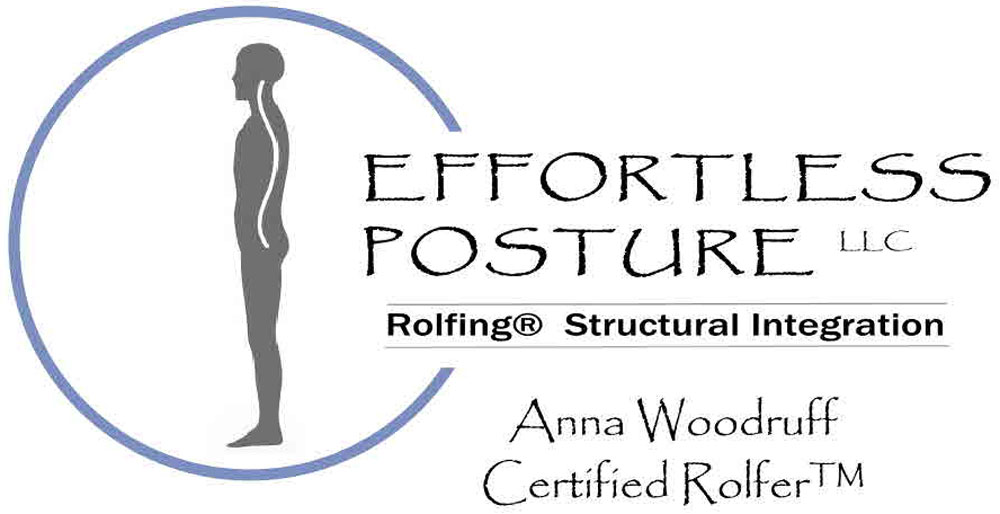The Rolfing 10-Series is a recipe of 10 sessions that starts with superficial layers, then goes deeper, with each session stacking up on top of the last session. Each session is completely different, catering to each individual’s needs. The objective of Rolfing Structural Integration is to get gravity to flow through us, instead of working against us. When gravity is flowing, we are more fluid with our movements, we stand and sit effortlessly, we have space in between bones, muscles, nerves, and organs, we are grounded yet at the same time lengthened, and we become more mature and confident about our body.
Sessions 1, 2, and 3 are known as the “Sleeve Sessions.” Sleeve, meaning the superficial fascia under the skin layer and the superficial muscles and some nerves.
Session One has the intention of the “Breath.” The breath is the most important item we need in order to live. We can go days without food and water, but we cannot survive after 3 minutes with no breath. (Please do not try to hold your breath for more than 3 minutes, it could cause brain damage.) The breath will usually go to the area in our body with the least resistance. As a Rolfing practitioner, I will manipulate the fascia and ask for movement to get your breath to go where it normally doesn’t. This will help get more oxygen and blood flow into the body.
Session Two is all about our foundation and support for the body. This session involves the feet, lower legs, and knees. This session may make the feet wider for those who need it. Our feet are not meant for shoes, they should be gripping and pushing off of the ground. Our lower legs act as shock absorbers for the rest of the body. If the lower legs are too tight, then the knees and hips will be compromised.
Session Three is about the “Vertical Line.” When looking at a client’s profile, as a Rolfer, I will line up the ear to shoulder to hip to knee to ankle. This will create a vertical line and at the same time correct any twisting that may be happening. This session also starts to get deeper by visiting the side of the psoas muscles and the quadratus lumborum muscles. This session balances the front and back of our bodies.
Sessions 4, 5, 6, and 7 are the “Core Sessions.” These sessions get deeper in the body, differentiating muscles that are closer to bones, organizing the digestive system, balancing the pelvis, and loosening fascia in and around our head.
Session Four organizes the inner midline of the legs and up into the pelvic floor. This session helps with any rotations someone may have with their legs while standing. This session will create a much larger stride while walking or running.
Session Five has the main focus of the “Psoas” and the entire front of the body. This session can also help with digestion. The psoas muscles are connected from the front side of the spine and then to the lesser trochanter of the femur bones. When this muscle is working properly, it can initiate leg movement and act as a stabilizer for the body. It will feel like our legs go all the way up to the diaphragm.
Session Six has the intention of the “Sacrum” and the entire back side of the body. The yogis also say the sacrum is sacred, because the sacrum holds a lot of emotions. The sacrum is the bottom of the spinal column. It should be independent of the hip bones. When our breath is flowing through the spine, the sacrum will move.
Session Seven involves the head and neck. This session also consists of intra-oral and intra-nasal work. This session will place our heads back onto our bodies and it completes the “Core Sessions.”
Sessions 8, 9, and 10 are the “Integrative Sessions.” This group of sessions completes any issues that are remaining and brings the client back into the world.
Sessions Eight and Nine are interchangeable as either an upper or lower session. These sessions get the lumbodorsal hinge to lengthen and have space, gets the hips balanced and moving independently, brings contralateral movement with the shoulders and legs, and gets the head to slightly bounce while walking.
Session Ten is the finale session. This session addresses any minor hiccups that may be occurring. As a Rolfing practitioner, I use this session to bring closure, holism, adaptability, palitonicity, support, and continuity to the body.
Once the 10-Series is completed, the body will keep integrating the work for 4 months to a year depending on your age. Your body will not completely revert back to your old pattern. You may need to have a tune-up session once a year to keep your new pattern flowing.
